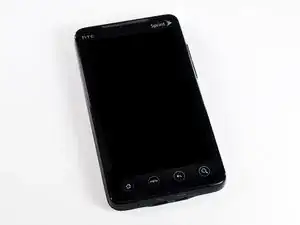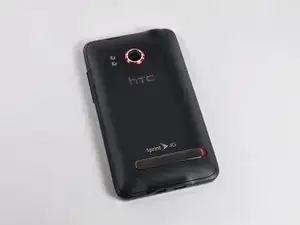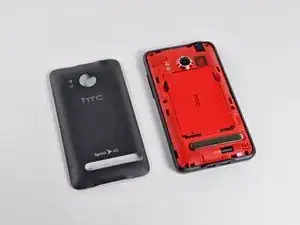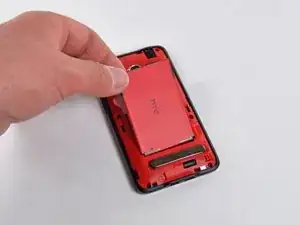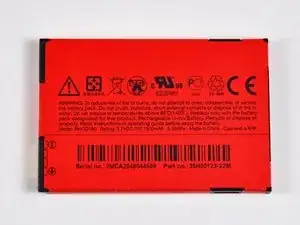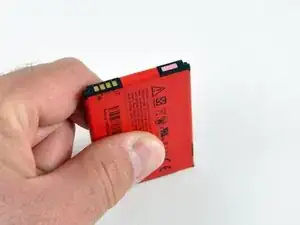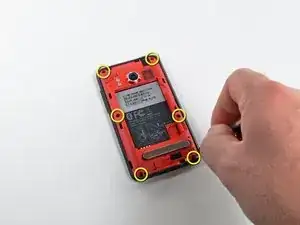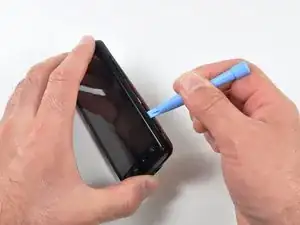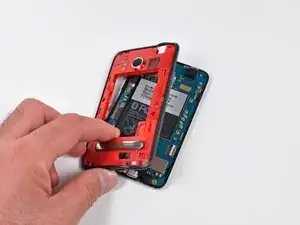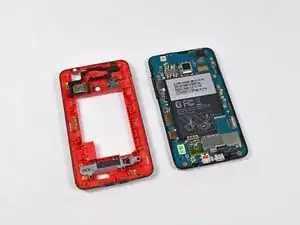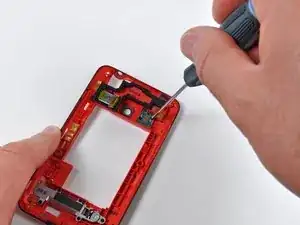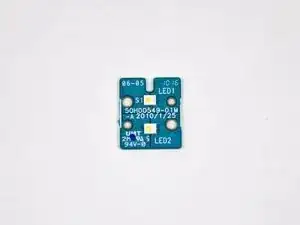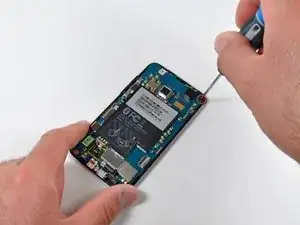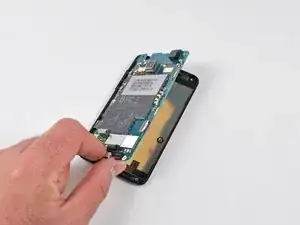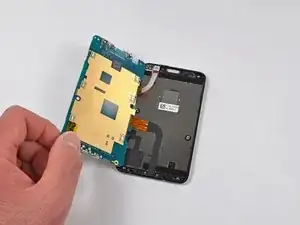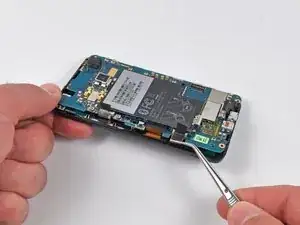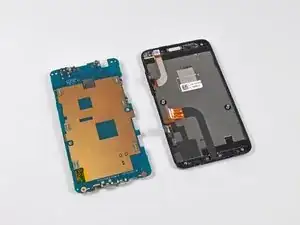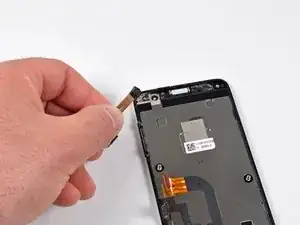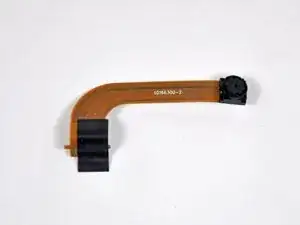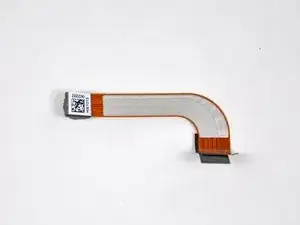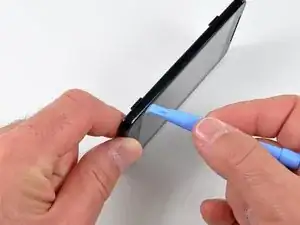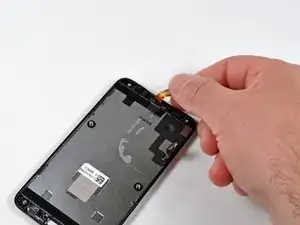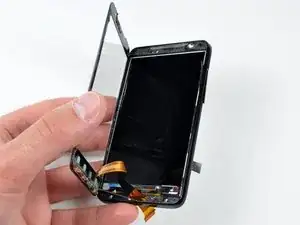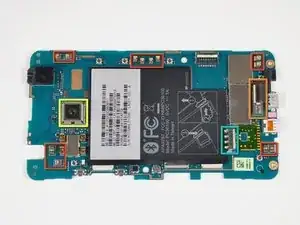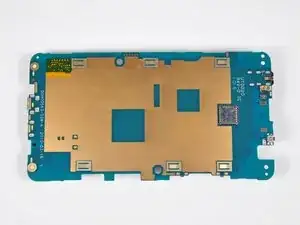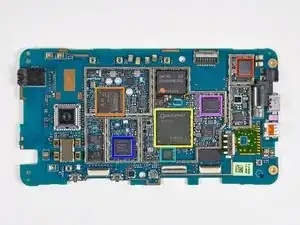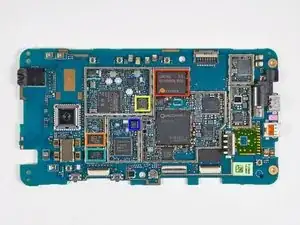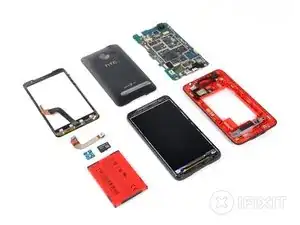Introduction
We pulled a couple of strings to acquire the most desirable Android phone today, the HTC Evo 4G!
Check out Wired's video of our HTC Evo 4G disassembly!
Tools
-
-
Today is a glorious day in the history of teardowns. We welcome the HTC Evo 4G to grandest stage of them all.
-
The Evo 4G's technical highlights include:
-
1 GHz Qualcomm Snapdragon processor
-
4.3 inch LCD Display
-
512 MB RAM
-
Dual cameras (1.3 MP front and 8MP back)
-
HDMI output (requires adapter)
-
Android 2.1
-
-
-
The top of the Evo's smooth-contoured rear case is dominated by an 8 Megapixel camera and its two LED flashes.
-
A flip-out stand on its bottom edge allows the Evo to sit horizontally for watching videos on the 4.3" behemoth of a display.
-
-
-
After a bit of careful prying, the rear case easily pops off the Evo.
-
Holy red innards! Maybe it's because the Republic of China's flag is 3/4 red?
-
-
-
Like most reasonable phones, changing the Evo's battery is a snap.
-
The 3.7 V, 1500 mAh rechargeable Li-ion battery weighs in at 31 grams.
-
That's 23% more capacity than an iPhone 3GS, 15% more than a Droid Incredible, and 7% more than a Nexus One.
-
Look out! There's a liquid damage indicator on the battery's top edge.
-
-
-
We delve deeper into the Evo 4G by removing six T5 Torx screws and carefully prying off the internal frame with an iPod opening tool.
-
-
-
The internal frame is easily removed from the rest of the Evo.
-
It houses the stand, antennas, LED flashes, and speaker.
-
-
-
Two small Phillips screws secure the LED flash to the internal frame.
-
The dual LED flash assembly consists of no more than two LEDs soldered to a small interconnect board.
-
-
-
A small Phillips screw near the top left corner of the Evo is all that keeps the left side of the logic board snug in its cradle.
-
-
-
After disconnecting ribbon cables for the display, digitizer, and front camera, the logic board can be removed from the front half of the Evo.
-
-
-
The forward facing 1.3 Megapixel camera lifts right out of its enclosure in the top portion of the Evo 4G.
-
-
-
We used an iPod opening tool to separate the glass from the LCD and frame.
-
Removing the glass is not terribly difficult with the Evo 4G. This is great news for those unfortunate enough to drop their shiny phone and crack the glass.
-
-
-
Standing out on the board:
-
Several rows of pressure contacts connecting the antennas to the logic board.
-
The vibrator motor for...well...vibrating.
-
8 Megapixel camera sensor.
-
Battery connector.
-
The other side of the board is about as featureless as it can be.
-
-
-
Big players on the board include:
-
A Broadcom BCM4329 integrating Wi-Fi, Bluetooth, and FM connectivity to provide speeds up to 50 Mbits/s in 802.11n.
-
Sequans SQ1210 RF combo chip.
-
Qualcomm's QSD8650 Snapdragon processor.
-
Atmel's MXT224 Touchscreen controller.
-
Qualcomm's RTR6500 CDMA2000 transceiver with GPS.
-
Qualcomm's PM7540 power management IC.
-
-
-
The fallen remains of what was once an HTC Evo 4G.
-
As always, thank you for choosing iFixit as your number one source for gadget teardowns.
-
